QUARTERBACKS
Braxton Miller’s 2011 season was supposed to be spent watching Pryor and learning. Instead, he started 10 games and ended up as the team’s leading rusher with 715 yards.
And this spring, Miller (6-2, 210) displayed enough potential to have Meyer sounding confident in his sophomore dual-threat signal-caller.
“He can pass the ball,” Meyer said. “Here’s the way you evaluate him: Release, A. A very good release. Arm strength, I would say a B, but I’m very critical. Accuracy, a C to B. We’ve got to get him more accurate, but he’s getting better.
“He had a very good spring.”
Last year, Miller sat behind fifth-year senior Joe Bauserman for three games, then took over. His start was rocky, going 1-2 as the Buckeyes sank to 3-3 overall.
OSU then beat Illinois almost without a passing game (Miller was 1 for 4 for 17 yards).
From there, though, Miller began to take off. In his first eight games, he accounted for just an average of 120 total yards a game, and eight TDs. In his last four games, he boosted those numbers to 229 total yards a game and 12 TDs.
He had three 100-yard rushing games, and though he completed only 54 percent of his passes, he showed some flashes of promise in that phase, as well — including a last-second game-winning TD toss against Wisconsin.
Another positive was throwing only four interceptions.
In the spring game, Miller completed 24-of-31 passes for 258 yards as the Buckeyes focused almost exclusively on the passing game.
The hope is Miller’s skills fit well with Meyer’s new, fast-paced spread system.
Of his first impression of Miller, new offensive coordinator Tom Herman said, “The ability level is there. It’s my job … to make sure we harness that ability.”
Fourth-year junior Kenny Guiton (6-3, 206) is the only other experienced quarterback, and that experience amounts to two pass attempts.
Freshman Cardale Jones (6-5, 226) is third string.
RUNNING BACKS
Senior Jordan Hall (5-9, 198) may finally have found the perfect offensive system to fit his skills.
Hall spent his first two seasons mostly as a kick returner, then worked his way a bit more into the backfield mix last season. He remained the team’s top return man but added 100 rushes and 12 receptions for 522 yards and five TDs.
This year in the spread, expect those receptions to go up. Many foresee Hall to assume a role not unlike Percy Harvin once filled for Meyer at Florida — more as a receiver in the flats and slot.
“The zone reads, the screens … just getting in the open field, I think that’s a good fit for me,” Hall said.
That leaves room for a standard run-first back or two to get work, as well. The leading candidate is junior Carlos Hyde (6-0, 235), a bruiser who averaged 5.3 yards a carry while splitting time last season.
Hyde had a good spring.
“He’s drinking the Kool-Aid right now,” Meyer said.
Two other tailbacks challenging for time are sophomore Rod Smith (6-3, 230) and true freshman Bri’onte Dunn (6-1, 214).
Smith attracted much attention coming into last year, drawing comparisons to former OSU great Eddie George. But he fumbled in each of the first two games and was relegated to spot duty afterward.
He then missed the team plane to the Gator Bowl, ending on a bad note.
Dunn enrolled early and showed enough potential that Meyer said he would not be redshirted.
With the Buckeyes moving away from an I-formation base offense, Meyer said his fullbacks will assume more of an H-back role. Hard-nosed senior Zach Boren (6-1, 246), who has 20 career receptions, probably will be a captain, even if his snaps decrease.
RECEIVERS
After his first practice, Meyer was lamenting a lack of playmakers at receiver.
“At Ohio State, you should walk off the field going, `Wow! Who are those two guys?'” he said. “I still today haven’t done that.”
It was a refrain throughout spring, and understandably so. OSU was woeful in the pass game last year, mostly because of Miller’s learning curve but also because its best receiver, DeVier Posey, was out for all but three games because of an NCAA suspension.
It sounds like a statistic from the Woody Hayes era, but it’s true: OSU’s leading receivers had just 14 catches (tie between sophomore Devin Smith, junior Corey Brown and Jake Stoneburner). Posey almost caught them at 12 in his three outings.
So the pressure is on, and the Buckeyes are feeling it.
“It definitely gets on our nerves,” sophomore Evan Spencer said of the constant harping on the lack of playmakers, “but we also use it as a challenge.”
The opportunity will be there, of course, in the spread. Meyer has put an emphasis on short, quick patterns in which the receivers catch it on the move.
Brown (6-0, 186), Spencer (6-2, 205) and Smith (6-1, 196) went through most of spring as the starting trio, but in the spring game, a new name emerged.
Freshman Michael Thomas (6-2, 193) caught 12 passes for 131 yards.
The problem is that Thomas is more of a possession receiver and the player most suited to be a deep threat (Brown) has shown questionable hands.
Other candidates include towering sophomore Tyrone Williams (6-6, 229) and converted high school quarterback Verlon Reed (6-1, 200), another sophomore who flashed last year before suffering a season-ending knee injury.
All of this could lead to much more work for the steady senior Stoneburner, a tight end by name but a receiver in high school and at heart. Again, some point to Meyer’s use of tight ends at Florida, such as Aaron Hernandez’s 68 catches in 2009.
“The first day we were warming up, [Meyer] said, ‘You better be a hell of a player,'” said Stoneburner, who has 35 catches in three seasons. “I think he’s expecting a lot from us.”
Last year’s backup, Reid Fragel, was converted to offensive tackle. That leaves sophomore Jeff Heuerman (6-6, 247) and freshman Nick Vannett (6-6, 248) as Stoneburner’s backups.
OFFENSIVE LINE
Only two starters return, but that might not be a bad thing. The three departing starters were highly touted as members of the 2008 “Block O” recruiting class, but only one — Mike Adams — was an NFL draft pick (Pittsburgh, second round).
The line has underachieved in the past, and now it must retool and adjust to Meyer’s spread system, which demands athleticism first and foremost.
The returnees are juniors Jack Mewhort (6-6, 310) and Andrew Norwell (6-6, 304), but Mewhort is moving from right guard to left tackle. That leaves Norwell as the only player coming back at the same spot (left guard).
In spring practice, junior Corey Linsley (6-3, 292) locked down the center spot. Junior Marcus Hall (6-6, 317), who had been a key reserve for several years, appears to be the starting right guard.
The only spot still with some uncertainty is right tackle. Senior Reid Fragel (6-8, 298), the converted tight end, has a slight edge on true freshman Taylor Decker (6-7, 310), who had a very impressive spring.
Some think it’s just a matter of time for Decker, who was a Notre Dame verbal commit until Meyer hired two Irish assistant coaches — Ed Warriner (O-line) and Tim Hinton (tight ends and fullbacks).
Another touted recruit, Kyle Dodson (6-6, 310), arrives in the fall.
Meyer and Warriner both expressed dismay at the line early on, when bodies were too soft and minds apparently were, as well. Several linemen were late to their first team meeting in January.
Depth remains a potential sore spot, but the other issues have at least begun to be resolved.
“They’ve really made a tremendous amount of progress,” Warinner said after the spring sessions. “[The offensive line] was probably the biggest area of concern in January when we got here. Through their hard work and dedication, they’ve put themselves in position where they can be a pretty good offensive line if they continue to work the next six months.”


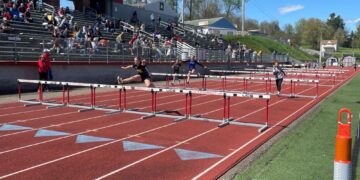

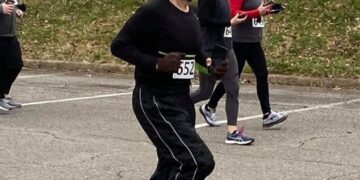



















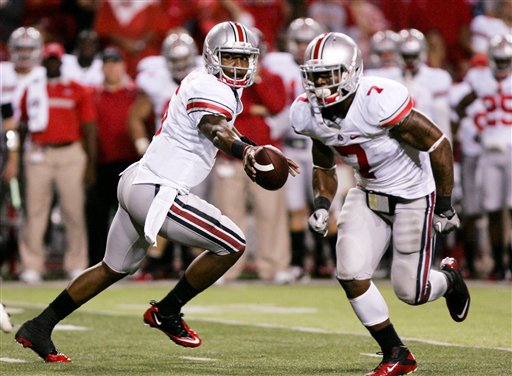
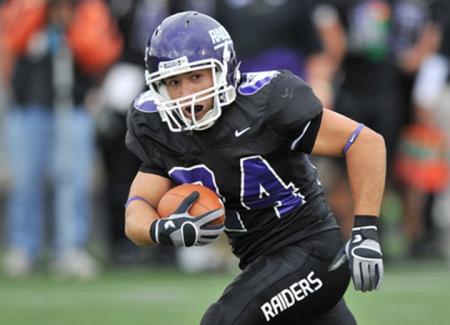



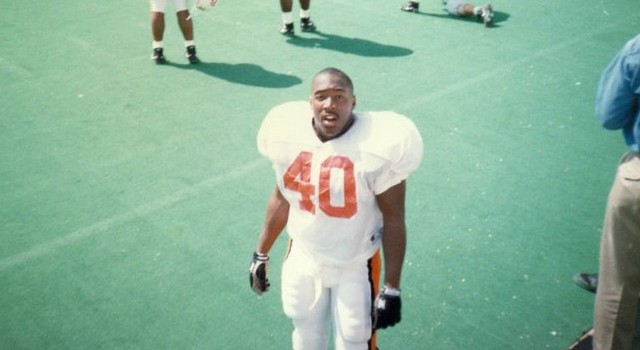


Discussion about this post